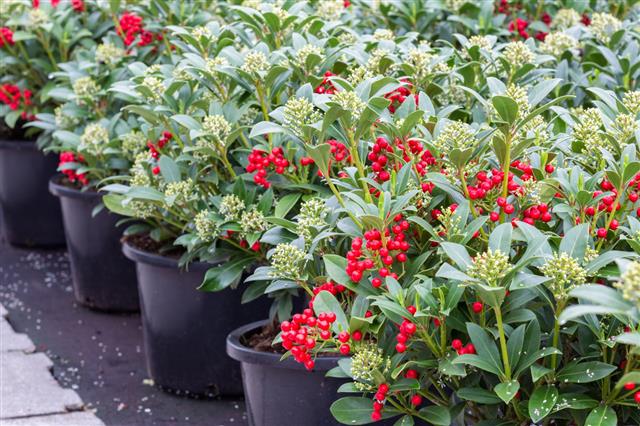
Flowering and non-flowering shrubs are an invariable part of a landscape design. To identify them is the easiest way of understanding their different types. This article provides some information related to identification of evergreen shrubs based on their leaf and flower characteristics.
The green color of nature is soothing to eyes. Those who are interested in gardening, are always in search of different kinds of shrubs, which can enhance the beauty of their garden. Beautiful hedges created with the help of shrubs or bushes offer privacy, and also add to the beauty of the garden. Landscape designs are used on a larger scale for five star hotels, extensive city gardens, corporate offices, and private gardens. Shrub identification by leaves, flowers, stems, fruits, barks, and branches help to classify them accordingly.
Description
Shrubs or bushes are much shorter than trees, and millions of species are present on our planet. They usually grow up to the height of 15 – 20 feet, depending upon the growing conditions. A shrub doesn’t have a single stem like a tree, and therefore, it appears bushy. Some are known for attractive dense leafy foliage, while some are known for stunning beauty of flowers. Their identification can be done on the basis of their characteristic properties, like being evergreen or deciduous, flowering or non-flowering, etc. Every class of these plants consists of hundreds of varieties.
Identification Criteria
By Leaf
For correct identification, you need to minutely study the leaves of different shrubs. Their shape, texture, and color varies according to the species. Moreover, you need to observe the leaf bottom and top, design of veins, leaf margin, and their arrangement on the stem and branches. The leaves can be oval-shaped, hand-shaped, triangular, lobe-shaped, or they can have rigid spines. Their colors can range from green, brown, yellow, or orange.
By Flower
Evergreen flowering shrubs are always in demand. You can examine a flower, and can identify the it with respect to the type of inflorescence. The following information presents some examples of commonly growing flowering shrubs.
Azalea

Native to Asia, Europe, and North America. The flowers bloom simultaneously.
Blue Hydrangeas

Most species are shrubs, growing 1 – 3 meter tall. The flowers resemble pom-poms, and their colors can be white, blue, red, pink, light purple, or dark purple.
Forsythia

These deciduous shrubs produce bright yellow flowers in early spring.
Banksia

Some species are trees, while others grow as woody shrubs. Elongated inflorescence that contains tightly-set pairs of flowers are placed at right angles to the woody axis.
Roses

This perennial flowering shrub can be grown with the help of root cuttings or grafting. The flowers are used for decoration, bouquets, in flower vases, etc.
Liliac Buddleja

Known as Butterfly Bush, some species are evergreen, while others are deciduous. White, pink, red, purple, orange, or yellow colored flowers produced in dense panicles by this plant species. The flowers are about 10-15 cm long, strongly scented, and contain ample nectar.
Oleander
This evergreen shrub is a poisonous garden plant, and flowers are present in clusters at the end of each branch.
Rhododendron Luteum

This is the national flower of Nepal. It can either be evergreen or deciduous, and is known for beautiful clusters of large flowers.
Protea Cynaroides

This species has the largest flower in its genus, and has more than 80 garden varieties. It has a long vase life, and is mainly used for decoration.
Cytisus Scoparius

Commonly known as scotch broom, this perennial shrub is native to Europe. Its golden yellow flowers cover the shrub from top to bottom in summer.
Shrub identification by with the help of flowers is the easiest way to remember the specific family or species of shrubs as each flowering shrub produces different kind of flowers. Flowering shrubs enhance the beauty of the garden, especially when used for hedging.








